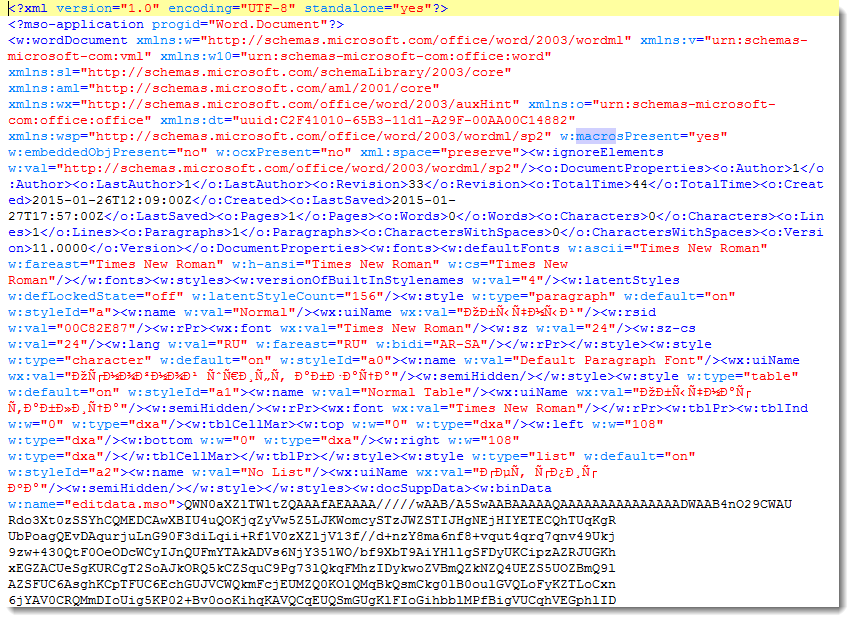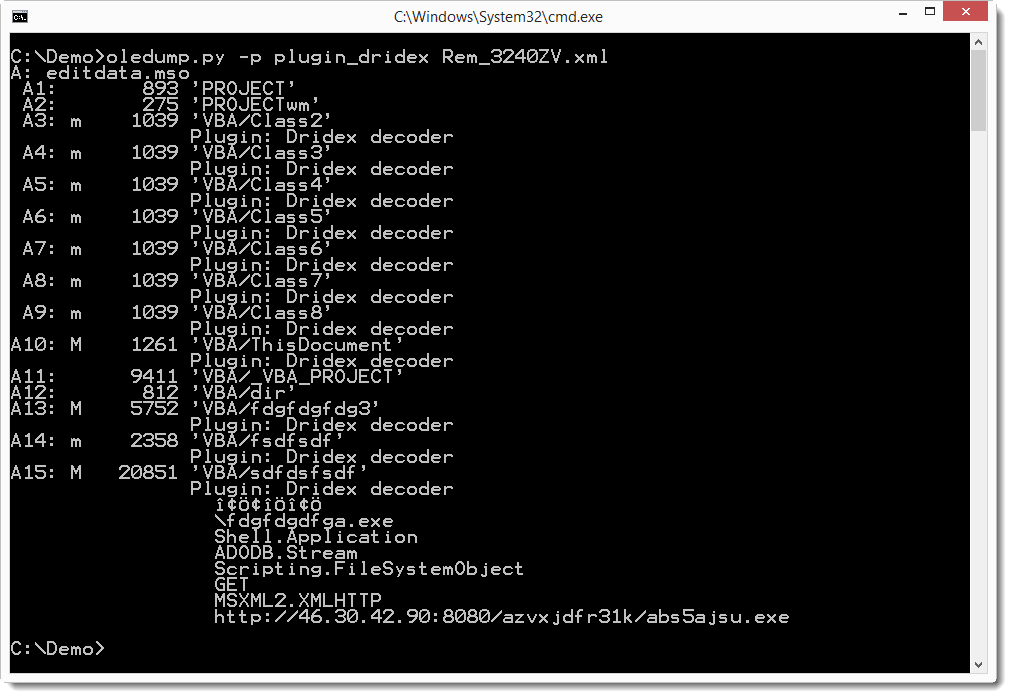XML: A New Vector For An Old Trick
October 2014 saw the beginning of an e-mail campaign spamming malicious Microsoft Office documents. Mostly Word documents using the “old” binary format, but sometimes Excel documents and sometimes the “new” ZIP/XML format. All with VBA macros that auto-execute when opened.
Yesterday, we started to see XML attachments. You might expect that these attachments open with Internet Explorer when you double-click them, but if you have Microsoft Office installed, they will open with Microsoft Word.

The XML file contains an element (w:binData) with a base64 string as content. Its attribute (w:name="editdata.mso") reveals it is a MSO file. Decoding the base64 string, we end up with a binary stream with header ActiveMime. 50 bytes into the stream (position 0x32), a ZLIB compression object starts. Inflating this object reveals an OLE file (header 0xD0CF1LE0) containing the VBA macros.
This OLE file can be analyzed with my oledump tool I mentioned in a previous diary entry [1], but I just released a new version [2] that handles XML files directly. And Philippe Lagadec already released a new version of his olevba tool yesterday [3].
Both tools are Python programs, giving you the means to analyze malicious Microsoft Office documents in any environment supporting Python, without Microsoft Office applications.
If you filter e-mail attachments that are Microsoft Office documents, you should check what your e-mail filter does with XML files. XML declaration identifies the XML file as a Word document, and attribute w:macrosPresent="yes" (of element w:wordDocument) indicates the presence of VBA macros. Remark that these strings are different for XML Excel documents.
Until now, we have only seen XML Word documents. Please post a comment if you received another format, like XML Excel documents, if possible with a link to the VirusTotal entry.
The MD5 of the sample discussed in this diary entry is 77739ab6c20e9dfbeffa3e2e6960e156.
1: https://isc.sans.edu/diary/oledump+analysis+of+Rocket+Kitten+-+Guest+Diary+by+Didier+Stevens/19137
2: http://blog.didierstevens.com/programs/oledump-py
3: http://www.decalage.info/python/oletools




Comments
Did a blog entry when they first hit here:
http://sanesecurity.blogspot.co.uk/2015/03/remittance-advice-rem-xml.html
Sanesecurity.Malware.24759.XmlHeurGen signature also created for ClamAV 3rd Party signatures (sanesecurty.com) to detect them.
Cheers,
Steve
Sanesecurity
Anonymous
Mar 6th 2015
1 decade ago
If you want the "red team" one check:
http://netcore.fr/xmhell/
Davy
Netcore
Anonymous
Mar 12th 2015
1 decade ago
Anonymous
Mar 16th 2015
1 decade ago